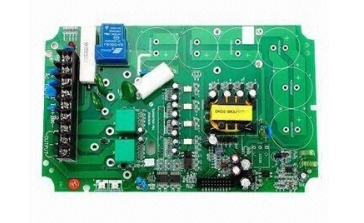Electronic manufacturing using surface mount technology (SMT) only means assembling electronic components with automatic machines that place the components on the surface of the circuit board (printed circuit board, PCB). Compared with traditional through-hole technology (THT), SMT components are placed directly on the PCB surface instead of soldering to the leads. In terms of electronic assembly, SMT is the most commonly used process in the industry.
Electronic assembly includes not only placing and soldering parts on the PCB, but also the following production steps:
Apply solder paste made of tin particles and flux to the PCB
The solder paste for placing the SMT components on the PCB uses a reflow process to solder the circuit board.
Apply solder paste

Applying solder paste is the first step in the SMT assembly process. The solder paste is "printed" on the board using screen printing. According to the design of the circuit board, different stainless steel templates are used to "print" the paste on the circuit board, and various product-specific pastes are used. Using a laser-cut stainless steel template customized for this project, the solder paste is only applied to the area where the components will be soldered. After the solder paste is applied to the board, a 2D solder paste inspection will be performed to ensure that the solder paste is applied correctly. Once the accuracy of the solder paste application is confirmed, the circuit board is transferred to the SMT assembly line, where components are assembled.
Component placement and assembly
Put the electronic components to be assembled into the tray or reel, and then load them into the SMT machine. During the loading process, the intelligent software system ensures that components will not be accidentally switched or loaded. Then, the SMT assembly machine uses a vacuum pipette to automatically remove each component from its tray or reel, and uses precise pre-programmed XY coordinates to place it in the correct position on the board. The machine can assemble up to 25,000 parts per hour. After the SMT assembly is completed, the board is moved to the reflow oven for soldering, thereby fixing the components on the board.
Component soldering
When soldering electronic components, two different methods are used, each of which has different advantages, depending on the quantity ordered. For mass production orders, the reflow soldering process is used. In this process, the board is placed in a nitrogen atmosphere and gradually heated with heated air until the solder paste is melted and the flux evaporates, thereby fusing the component to the PCB. After this stage, the plate is cooled. When the tin in the solder paste hardens, the component will be permanently fixed on the board, thus completing the SMT assembly process.
There is a dedicated vapor phase welding process for prototypes or highly sensitive components. In this process, the board is heated to a specific melting point (Gordon) of the solder paste. Welding can be carried out at a lower temperature, or different SMT components can be welded at different temperatures according to different welding temperature profiles.
AOI and visual inspection
Soldering is the penultimate step of the SMT assembly process. In order to ensure the quality of assembled boards, or to find and correct errors, AOI visual inspections have been carried out on almost all mass production orders. The AOI system uses multiple cameras to automatically inspect each board and compare the appearance of each board with the correct predefined reference image. If there is any deviation, the machine operator will be notified of the possible problem, and he will correct the error or pull the board out of the machine for further inspection. AOI visual inspection can ensure the consistency and accuracy in the production process of SMT components.